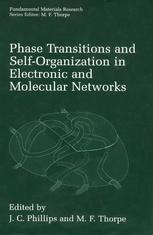

Most ebook files are in PDF format, so you can easily read them using various software such as Foxit Reader or directly on the Google Chrome browser.
Some ebook files are released by publishers in other formats such as .awz, .mobi, .epub, .fb2, etc. You may need to install specific software to read these formats on mobile/PC, such as Calibre.
Please read the tutorial at this link: https://ebookbell.com/faq
We offer FREE conversion to the popular formats you request; however, this may take some time. Therefore, right after payment, please email us, and we will try to provide the service as quickly as possible.
For some exceptional file formats or broken links (if any), please refrain from opening any disputes. Instead, email us first, and we will try to assist within a maximum of 6 hours.
EbookBell Team

4.8
64 reviewsAdvances in nanoscale science show that the properties of many materials are dominated by internal structures. In molecular cases, such as window glass and proteins, these internal structures obviously have a network character. However, in many partly disordered electronic materials, almost all attempts at understanding are based on traditional continuum models. This workshop focuses first on the phase diagrams and phase transitions of materials known to be composed of molecular networks. These phase properties characteristically contain remarkable features, such as intermediate phases that lead to reversibility windows in glass transitions as functions of composition. These features arise as a result of self-organization of the internal structures of the intermediate phases. In the protein case, this self-organization is the basis for protein folding.
The second focus is on partly disordered electronic materials whose phase properties exhibit the same remarkable features. In fact, the phenomenon of High Temperature Superconductivity, discovered by Bednorz and Mueller in 1986, and now the subject of 75,000 research papers, also arises from such an intermediate phase. More recently discovered electronic phenomena, such as giant magnetoresistance, also are made possible only by the existence of such special phases.
This book gives an overview of the methods and results obtained so far by studying the characteristics and properties of nanoscale self-organized networks. It demonstrates the universality of the network approach over a range of disciplines, from protein folding to the newest electronic materials.